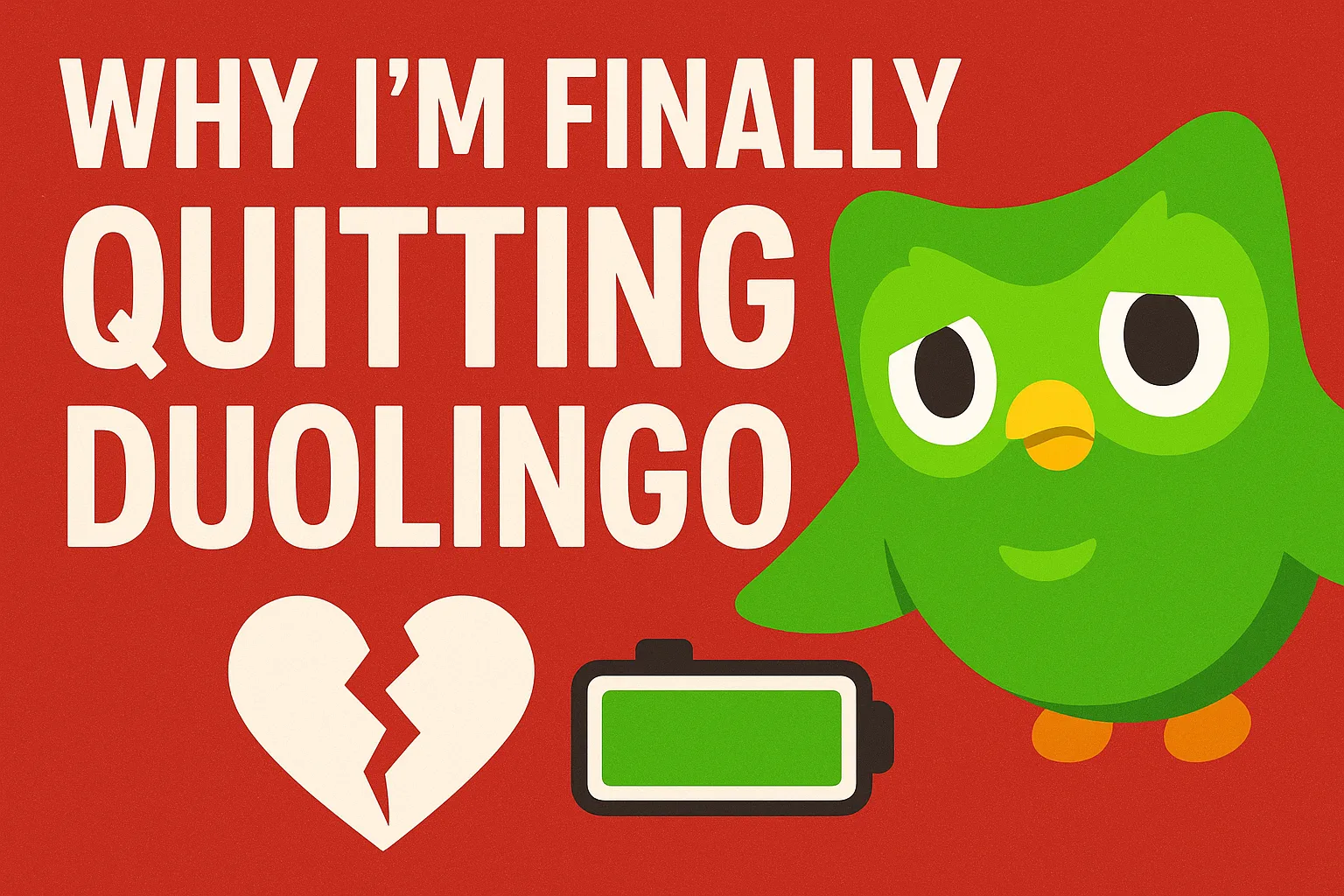Table of Contents
Introduction: Squaredtech’s Perspective on Duolingo’s Big Shift
At Squaredtech, we analyze how technology products evolve, how they impact user experiences, and how changes in design or monetization strategies shape loyalty. Today, Duolingo is at the center of heavy debate, and after years of using the app, I’ve finally made the decision to quit. The trigger is the introduction of a new energy system, which has changed the structure of language learning inside the platform.
For more than 700 days, I maintained my Duolingo streak. That streak became both a motivator and a form of digital achievement. The app’s constant reminders and its iconic green owl mascot pushed me to keep going. Even during moments of frustration, I stayed because I felt attached to the routine. However, the latest change was enough to sever that attachment, and as I write this analysis, we see a broader story unfolding about the limits of monetization in education technology.
Check Out Our Article of Breaking Down Success Of Duolingo: The Impact of Streaks and Timely Nudges published on
June 20, 2025 SquaredTech
The Shift from Hearts to Energy: Why It Matters
For years, Duolingo relied on its “hearts” system for free users. Every learner began with five hearts. Each mistake removed a heart, and once you lost all five, you either had to wait for them to recharge, watch ads, or complete practice lessons to regain them. The system frustrated some users, but it was at least straightforward: mistakes carried a cost, while correct lessons could go on without restriction.
In July 2025, Duolingo announced a new model: the energy system. Instead of five hearts, learners now have 25 energy points. At first, this seems like an upgrade. Yet the difference is critical. Hearts only depleted when you made mistakes. Energy depletes with every single exercise, no matter how accurate you are. Even if you complete a perfect lesson, your energy drains until you run out.
Here’s how it works:
- Each exercise reduces energy.
- Consecutive correct answers restore a small portion, but never enough to sustain a long session.
- When the battery runs out, users must spend in-game gems, watch ads, or subscribe to the premium plan to continue.
This shift is more restrictive than the hearts system. Under the old model, a skilled learner could advance for hours without penalty. Under the energy system, progress halts regardless of performance. our company views this as a structural change that alters the psychology of the app: users now face a barrier even when they succeed.
User Backlash and the Community Response
Duolingo’s energy system has not gone unnoticed. The community, especially on Reddit, has been outspoken. Thousands of posts criticize the change as a paywall disguised as a feature. A poll with more than 11,000 votes shows how divisive the update is:
- 11% say they are fine with it
- 6% say they prefer it to hearts
- 49% say they dislike it
- 35% have not used it yet
These numbers are revealing. Nearly half of users actively dislike the system, while only a small minority supports it. we interpret this as evidence that Duolingo underestimated how strongly users valued freedom in lesson progression. Even those who have not tried it yet are being influenced by negative community feedback.
The gradual rollout of the feature also fueled resentment. Some users had the old system while others were switched to energy, creating inconsistency and frustration. For me, the change arrived in September, and the difference was immediately obvious. I could no longer maintain my learning pace.
Personal Experience: Why Energy Broke My Streak
I hit a major roadblock when Duolingo updated its Mandarin course. The app introduced new vocabulary as if I had already learned it, and the placement of new material was inconsistent. I kept circling back to older lessons, struggling to identify where new characters appeared. My progress slowed, and I focused more on reviewing Hanzi (Chinese characters) rather than moving forward.
This was manageable under the hearts system. But the energy system turned my frustration into a breaking point. Shorter Hanzi lessons consumed less energy, so I clung to them. However, when I attempted full lessons, I discovered the true limitation:
- Without mistakes, I ran out of energy by the third lesson.
- With mistakes, I ran out even earlier.
- Recharging through vocabulary practice gave me only five energy, not enough for another full lesson.
I tested the app at the same time each day, expecting a full battery as promised. Instead, I often returned to only 23 or 24 energy, never the 25 that should have been available. This inconsistency deepened my distrust. What should have been an empowering daily routine became a countdown to forced pauses.
From our perspective, this illustrates a critical design flaw: punishing consistent learners discourages engagement. A gamified platform thrives on momentum, and Duolingo has introduced friction where users expect flow.
Monetization vs. Learning: A Step Too Far
Duolingo has always balanced free and paid models. Ads, gems, and premium subscriptions were familiar trade-offs. Yet the energy system marks a turning point. It limits even high-performing learners and funnels them toward monetization. For some, that may be acceptable. For me, and many others, it feels like the learning experience has been sacrificed for revenue.
At Squaredtech, we recognize that free apps must generate income. However, sustainable monetization strategies should not erode the educational value. In this case, the app’s most loyal users, those maintaining long streaks are the very people most affected. Instead of rewarding commitment, Duolingo’s design penalizes it.
The broader impact is clear: free users are being pushed away. Community sentiment shows that many are already exploring alternatives. For Duolingo, this could mean short-term gains in subscriptions but long-term loss in trust and retention.
Exploring Alternatives: Where Users May Go Next
After quitting Duolingo, I began testing other options. My initial choice was SuperChinese, which emphasizes structured lessons in Mandarin. While no app is perfect, SuperChinese at least allows me to progress without artificial daily limits.
Other possibilities include Google Translate’s Practice feature, which could become a lightweight but practical tool if expanded, and Google’s Little Language Lessons, which may provide more interactive approaches in the future.
The language learning market is competitive, and we see this as an opportunity for rivals. When a major player introduces a controversial system, competitors that focus on user experience can capture disillusioned learners.

Conclusion: Why Squaredtech Says Goodbye to Duolingo
After more than 700 days of dedication, I finally decided to quit Duolingo. The introduction of the energy system is more than a technical update. It changes how free users engage with learning, turning a motivational tool into a frustrating barrier.
The community’s strong backlash, the inconsistency in how the feature functions, and the pressure to subscribe all contribute to a user experience that no longer feels rewarding. Squaredtech’s analysis shows that monetization strategies like this can erode loyalty, especially in education technology, where the mission should be empowerment rather than limitation.
For me, burnout was once the biggest obstacle in learning with Duolingo. Today, the obstacle is the app itself. My language learning journey will continue, but without Duolingo. And I know many other learners are making the same decision.
Stay Updated: Tech News


